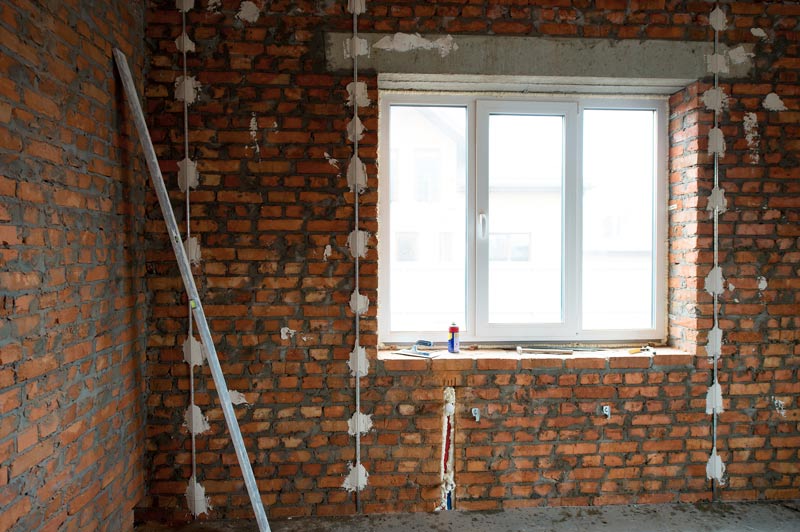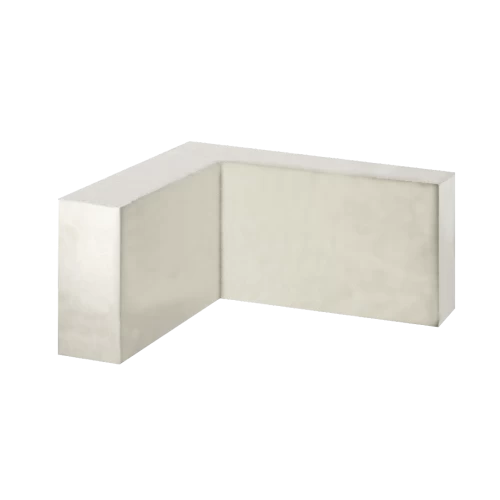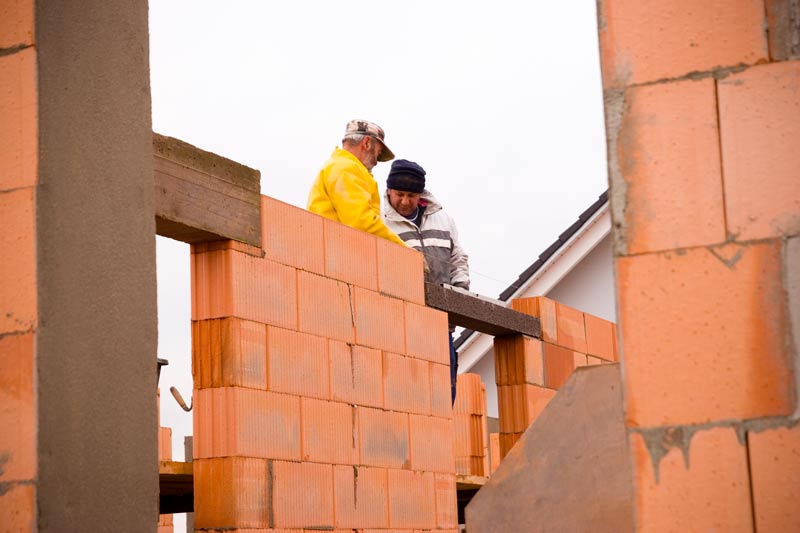
When it comes to constructing masonry walls, one crucial element that should not be overlooked is the concrete lintel in Masonry.
Serving as a vital support system, these sturdy structures carry the weight of the structure above an opening in the wall. Not only are they cost-effective, making them an excellent choice for internal blockwork walls and rendered facades, but they also offer resilience in fire and can withstand harsh environments such as maritime areas.
From below DPC service entry or exit to internal blockwork partition walls and external walls, concrete lintels find their application in various areas. However, it’s essential to remember that the size of the lintel is dependent on the size of the opening, and larger openings may require special-order lintels.
Additionally, proper installation techniques, such as setting the lintel level on a bed of mortar and using lintel propping for wider openings, should be followed to ensure structural integrity. For larger projects, it’s always advisable to consult a structural engineer to determine the appropriate lintel specification. So, let’s delve into the world of concrete lintels and recognize their significance in masonry walls.

Overview of Concrete Lintels
Concrete lintels play a crucial role in carrying the weight of a structure above an opening in a masonry wall. These lintels are a cost-effective choice for various applications, including internal blockwork walls and rendered facades. They offer several advantages over other materials, making them a popular choice in construction projects.
One of the key benefits of concrete lintels is their cost-effectiveness. Compared to steel lintels, concrete lintels are cheaper to produce. This makes them a more affordable option for builders and homeowners alike, without compromising on structural integrity.
In addition to being cost-effective, concrete lintels also exhibit remarkable resilience in fire and harsh environments. They can withstand high temperatures and adverse conditions, making them suitable for use in areas prone to fire hazards or maritime locations.
Concrete lintels have a wide range of applications. They can be used for below DPC (Damp Proof Course) service entry or exit, internal blockwork partition walls, and external walls. Their versatility makes them an essential component in various construction projects.
Factors Influencing Lintel Size
The size of a concrete lintel is primarily determined by the size of the opening it needs to support. As a general rule, larger openings will require special-order lintels to provide adequate support and load-bearing capacity. It is crucial to factor in the dimensions of the opening when selecting a lintel to ensure proper structural integrity.
For larger openings, it is recommended to consult with a professional to determine the appropriate lintel size. Structural engineers can provide valuable insights and guidance on the specific requirements of the project, ensuring that the lintel chosen is suitable for the load it will bear.

Installation Guidelines for Concrete Lintels in Masonry
Proper installation is essential to maximize the performance and durability of concrete lintels. Here are two important guidelines to follow during the installation process:
Using Mortar Bed for Level Installation
To ensure a level installation, it is recommended to use a mortar bed when setting the concrete lintel. The mortar bed provides stability and helps distribute the load evenly across the lintel. It is important to ensure that the lintel is properly supported and sits level on the mortar bed to prevent any structural issues in the future.
Avoiding Drilling or Setting Anchors into Lintels
Drilling or setting anchors into concrete lintels is strongly discouraged. These actions can compromise the structural integrity of the lintel, leading to potential failures or costly repairs down the line. It is best to avoid any unnecessary penetrations and rely on the lintel’s inherent strength to support the load.
By following these installation guidelines, you can ensure that your concrete lintels are properly installed and will perform optimally throughout their lifespan.

Importance of Lintel Propping
In cases where the opening exceeds 1200mm in width, lintel propping becomes necessary to ensure the structural integrity of the lintel and the surrounding wall. Lintel propping involves the use of temporary supports, known as props, to assist in carrying the load during construction.
Necessity for Lintel Propping in Wide Openings
Wide openings place additional stress on the lintel, which may lead to sagging or collapse if not properly supported. Lintel propping helps distribute the weight evenly, preventing any deformation or damage to the lintel. It is crucial to identify the appropriate points of propping and ensure the props are securely in place before removing any temporary supports.
Duration of Lintel Propping
The duration for which lintel propping should be in place depends on various factors, such as the type and size of the opening, as well as the specific lintel being used. However, as a general guideline, props should remain in place for at least 24 hours to allow the mortar or other supporting materials to properly set and cure.
Effectiveness in Ensuring Structural Integrity
Lintel propping plays a significant role in maintaining the structural integrity of the lintel and surrounding walls. It provides additional support during construction, reducing the risk of any potential failures or deformations. Proper propping can help ensure that the lintel performs its intended function effectively, providing long-lasting support for the structure.

Curing Time for Mortar Beds
After setting the concrete lintel on a mortar bed, it is essential to allow sufficient time for the mortar to cure. Curing enhances the strength and stability of the mortar, ensuring that it can withstand the structural demands placed on it.
Allowing Sufficient Time for Mortar Bed to Cure
The exact curing time for the mortar bed will depend on factors such as temperature and humidity. As a general rule, it is recommended to wait at least 24 to 48 hours before applying any additional loads or adding further courses of brick or blockwork above the lintel. This timeframe allows the mortar to achieve adequate strength and stability, minimizing the risk of any cracks or failures.
Adding Further Brick or Blockwork Courses after Curing
Once the mortar bed has fully cured, additional courses of brick or blockwork can be safely added above the lintel. It is important to ensure proper alignment and secure bonding between the new courses and the existing structure. Following proper construction techniques and guidelines will help maintain the integrity of the overall structure.

Considerations for Larger Projects
For larger construction projects involving concrete lintels, it is advisable to seek professional advice from structural engineers. Their expertise and knowledge can provide valuable insights into lintel specification and ensure the selection of lintels that meet the specific requirements of the project.
Seeking Professional Advice from Structural Engineers
Structural engineers possess the expertise to assess and analyze the load requirements of the project. By consulting with them during the design phase, you can benefit from their insights and ensure that the lintels chosen are capable of withstanding the anticipated loads.
Consultation for Lintel Specification
Structural engineers can also provide guidance on the appropriate material specifications and dimensions for the lintels. They can consider various factors, such as the type of structure, environmental conditions, and design requirements, to recommend lintels that will offer optimal performance and longevity.
In conclusion, concrete lintels are an essential component in construction projects, providing cost-effective support for openings in masonry walls. Proper installation, including the use of mortar beds and avoidance of drilling or setting anchors, is crucial for their performance. Lintel propping ensures the structural integrity of wide openings, while allowing sufficient curing time for mortar beds is essential. For larger projects, consulting with a structural engineer can help ensure appropriate lintel specification and optimal performance. By following these guidelines and considering the factors influencing lintel size, you can ensure the successful use of concrete lintels in your construction projects.












